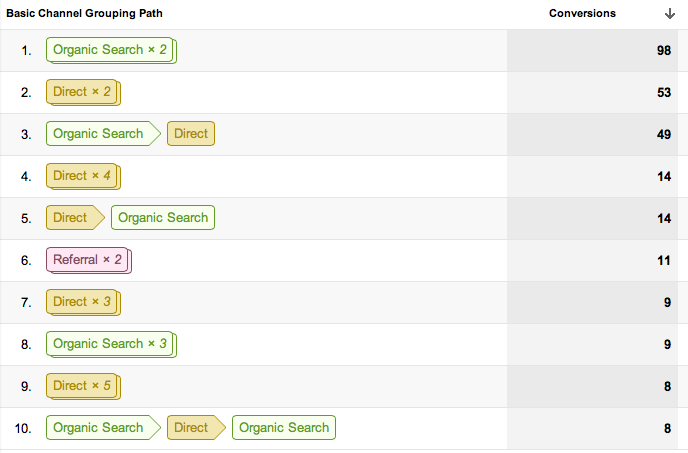Recognizing What Data Is Google Analytics Goals Unable to Track
Recognizing What Data Is Google Analytics Goals Unable to Track
Blog Article
Demystifying Google Analytics Limitations: Reveal What Information Goals Can not Track
In the world of digital analytics, Google Analytics stands as an effective device that supplies important understandings right into site performance and customer habits. In the middle of its capabilities, there exist restrictions that usually go undetected. Recognizing what Google Analytics can not track is crucial for a thorough grasp of data analysis and decision-making procedures. From the intricacies of individual interaction with vibrant web content to the intricacies of cross-device customer journeys, these restrictions clarified areas that might stay covered from standard analytics point of views. By untangling these restrictions, a more clear picture emerges, permitting even more informed approaches and improved understandings into individual engagement and conversions.

Customer Interaction With Dynamic Web Content
Individual interaction with dynamic web content plays an essential function in recognizing customer behavior on web sites and maximizing the overall individual experience. Dynamic content describes components on a webpage that can change without the requirement for a complete page reload. This includes interactive aspects such as pop-ups, sliders, kinds, and video clips that reply to individual activities in real-time. By tracking customer interactions with dynamic material, site proprietors can acquire useful understandings right into customer engagement, preferences, and habits.
Google Analytics uses various devices to track individual interactions with vibrant web content, such as event monitoring and virtual pageviews. Occasion tracking permits you to check certain user activities, like clicking a switch or enjoying a video, giving data on just how individuals connect with vibrant aspects.
Cross-Device User Journeys
Exactly how can modern analytics tools track the complex courses users take across several devices in their on the internet trips? Cross-device user trips present a substantial difficulty for monitoring and assessing individual actions accurately. As individuals connect with apps or web sites making use of various tools such as mobile phones, desktop computers, and tablet computers, it becomes vital to understand how they move in between these systems to enhance user experience effectively.
Google Analytics encounters constraints in tracking cross-device user journeys as a result of personal privacy problems and technological restraints - what data is google analytics goals unable to track. While it can provide insights right into specific gadgets' interactions, tracking a seamless customer journey throughout numerous gadgets remains a difficulty. This limitation can lead to incomplete information and fragmented user insights, making it hard for businesses to develop a unified sight of the client journey
To address this concern, companies can utilize innovative analytics tools that offer cross-device monitoring capacities, enabling them to gain a much more alternative understanding of user actions. By leveraging these tools, services can link the gap in tracking cross-device user journeys and maximize their digital methods for a seamless customer experience.
Offline Conversions and Attribution
As services navigate the obstacles of tracking cross-device individual trips, one more essential element to consider is the world of offline conversions and attribution in the world of data analytics. While Google Analytics supplies useful insights into on-line individual behavior, it falls short when it involves tracking conversions that occur offline. This constraint poses a substantial difficulty for companies that have both online and offline sales networks.
Offline conversions, such as purchases made in physical stores or via phone call read what he said centers, are vital to recognizing the complete client trip. Without the ability to connect these offline conversions to certain on-line communications, businesses may battle to accurately determine the influence of their digital advertising efforts.
To resolve this void, businesses can check out alternate remedies such as integrating CRM systems with on-line analytics devices or utilizing distinct discount codes that can be mapped back to online campaigns. By connecting the void in between online and offline data, companies can obtain a more extensive understanding of their clients' habits and boost their overall advertising methods.
Person Customer Recognition
In the world of data analytics, the capability to properly recognize specific customers throughout numerous on-line touchpoints is a vital difficulty for services looking for to customize and optimize their advertising approaches. While Google Analytics provides beneficial understandings right into customer actions and communications, it drops short in making it possible for the recognition of certain people because of privacy problems and technological limitations. Google Analytics uses unique identifiers such as cookies to track user sessions and actions, however these do not relate to determining private users in an individual sense.

Data From Secure Pages
Regardless of the enhancing occurrence of secure web pages on websites, acquiring data from these encrypted sources presents an one-of-a-kind challenge for electronic analytics platforms like Google Analytics. Protect web pages, indicated by HTTPS in the link, encrypt data traded read the article between the individual's browser and the internet site's server to make sure privacy and safety. While this security is crucial for safeguarding delicate details, it also positions constraints for tracking user actions and celebration analytics data.
Google Analytics deals with barriers in accumulating detailed information from safe and secure web pages due to the file encryption methods in place. Because of this, certain data points such as recommendation sources, keyword searches, and also some user interactions may not be totally recorded when customers access a website with a safe link. This constraint can influence the precision and efficiency of the data analysis, resulting in spaces in comprehending individual habits and choices on secure pages.
To browse this obstacle, electronic experts might need to explore alternative tracking methods or leverage various other tools especially designed to gather insights from protected pages. By adjusting strategies to accommodate these limitations, companies can still derive valuable analytics despite the restraints offered by encrypted links.
Final Thought
In final thought, Google Analytics has constraints in tracking customer interaction with vibrant content, cross-device user trips, offline conversions, individual customer identification, and data from secure web pages. These limitations impede an extensive understanding of user habits and might result in voids in data evaluation. Despite its important understandings, Google Analytics might not provide a complete photo of customer engagement across various touchpoints. It is crucial for companies to be knowledgeable about these restrictions and take into consideration supplementary devices for a much more holistic sight of their data.
Customer interaction with dynamic content plays a critical role in comprehending customer actions on web sites and optimizing the general customer experience. By tracking user interactions with vibrant material, internet site owners can acquire beneficial insights into customer involvement, preferences, and habits.
Google Analytics makes use of unique identifiers such as cookies to track user sessions and habits, yet these do not equate to determining specific customers in an individual feeling.
As a result, specific information factors such as reference sources, keyword searches, and even some individual interactions may not be completely caught when customers access a website through a safe and secure connection.In conclusion, Google Analytics has restrictions in tracking individual interaction with dynamic web content, cross-device user trips, offline conversions, specific customer recognition, and information from secure pages.
Report this page